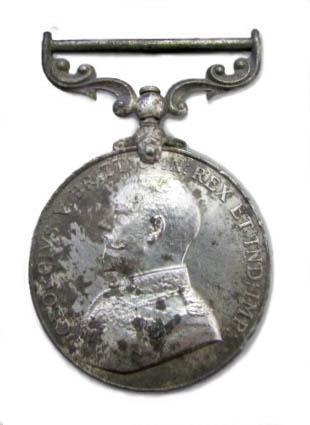Frederick Nunn was born on 21st November 1883 and was the second son of Caleb and Ellen (née Knights) of Bredfield. In the 1901 census, Frederick’s occupation is shown as a carpenter, but on 5th August 1905, he started work as an attendant at St Audry’s Hospital. The 11th December 1909 saw Frederick marry Annie Laura Gray who had been born in Eyke but was living with her family in Sproughton, Suffolk. In 1911, Frederick and Annie were living at 13 Upper Melton Terrace.
Frederick enlisted with the Royal Army Medical Corps (RAMC) on 27th July 1915, along with five other attendants from St Audry’s. Frederick was assigned to the 104th Field Ambulance, whose role was to provide first aid near or at the front line. They would then transport the wounded to the nearest casualty clearing station for further treatment and, from there, either back to their battalion or a general hospital.
On the 8th January 1916, Frederick, along with ten officers and two hundred and fifteen other ranks of the 104th Field Ambulance marched out of Sutton Veny Camp in Wiltshire and boarded a train for Southampton. That evening, half the men embarked for Le Havre on the HT Viper and the other half, plus the transport, on the HT Australind.
Frederick Nunn's Military Medal as sold by 
Lockdales Auctioneers in 2014.
In the middle of May 1916, the 104th Field Ambulance received orders to move to Albert, on the Somme. On the 1st July 1916, they were near the front line at La Boiselles awaiting the start of the Battle of The Somme. At 07:28am the war diary says:
“A mine was exploded in the neighbourhood of La Boiselle and an attack was made with a considerable number of casualties.”
The mine consisted of 27,000kg of explosives placed in a tunnel underneath a German field stronghold known as the “Schwabenhöhe”. The subsequent explosion formed a crater almost 300ft (91m) in diameter and 70ft (21m) deep, now known as the Lochnagar Crater. The 104th Field Ambulance war diary goes on to say:
“9:00am. Casualties begin to arrive chiefly walking cases, who were treated in temporary Divisional Collecting Station but after stretcher cases on wheeled stretchers. At about 10:00 am cars were sent up to the Bapaume Post and wounded men increased in numbers. The total being 1634 in 24 hours.”
The previous day they had treated one hundred and fifty men.
It is thought that for his actions during the first day of the Somme, dressing and bringing in the wounded under heavy fire, Frederick Nunn was awarded the Military Medal. The medal ribbon was awarded to Corporal F. Nunn and Private H. W. Whiting by the A.D.M.S (Assistant Director Medical Services) while stationed at L’Estrad Farm on 18th November 1916 – the last day of the Battle of the Somme.
At the end of the war, Frederick returned to his wife in Bredfield and resumed work at St Audry’s. Frederick died in 1947 while living at High View, Paper Mill Lane, Claydon, Suffolk. In addition to his Military Medal, Frederick received the British War and Victory Medals.
